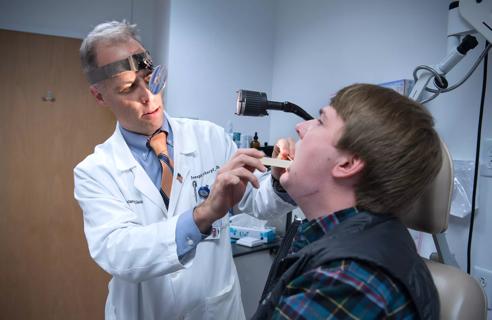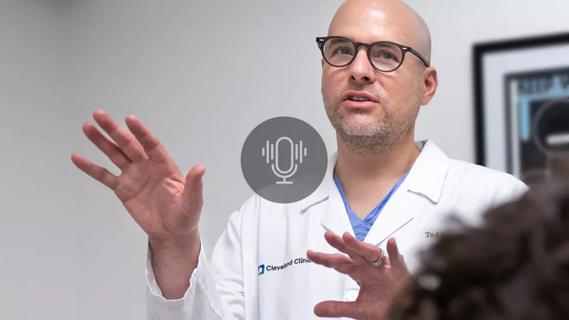Cleveland Clinic’s Hearing Implant Program advocates to improve CI access

Only about 10% of patients who could benefit from cochlear implants (CI) actually have the device. One reason for this under-utilization is that insurance coverage has not expanded as rapidly as clinical best practices. While CI is commonly a covered benefit for severe-to-profound hearing loss, coverage policies often limit access for patients with single-sided or asymmetric hearing loss, or significant residual hearing in the ear to be implanted. Sarah Sydlowski, AuD, PhD, MBA, Audiology Director and Erika Woodson, MD, Medical Director of the Hearing Implant Program (HIP) at Cleveland Clinic’s Head & Neck Institute, believe that in order to improve future access to the device, clinicians have a responsibility to recommend the most appropriate clinical option, inform patients of their candidacy and potential for benefit, and quantify for insurers the impact that lack of coverage has on their beneficiaries.
Advertisement
Cleveland Clinic is a non-profit academic medical center. Advertising on our site helps support our mission. We do not endorse non-Cleveland Clinic products or services. Policy
Determination of CI candidacy has changed tremendously in recent years. New interpretation of standard test batteries has been implemented, such as using single words rather than sentences, and providers realize that ear-specific consideration is critical. The presence of residual hearing is no longer a contraindication; rather it often results in more favorable outcomes. “Our technology and our ability to help people hear is continuing to grow, but the coverage for those services, especially for people who have less than profound hearing loss, isn’t keeping track,” explains Dr. Woodson.
For most situations, the U.S. Food and Drug Administration (FDA) criteria for CI still generally describes candidacy by speech recognition ability using sentences, as well as both ears’ contribution to listening ability. Because there is flexibility to go off-label, this approach is not a completely limiting factor, but some insurance coverage policies expect the clinician to follow FDA criteria rigidly in order to cover the procedure. Even more stringent, the Centers for Medicare and Medicaid Services (CMS), require that Medicare Part B beneficiaries demonstrate limited benefit with hearing aids when both ears are listening together. They also still require sentence recognition to determine candidacy, with a much more stringent cutoff than the FDA. Although the slow-to-advance coverage of CI is disappointing to clinicians who know the benefit that can be enjoyed by recipients, the trend by clinicians to indicate that patients are not CI candidates because they don’t meet their insurer’s coverage criteria is even more concerning.
Advertisement
Drs. Sydlowski and Woodson believe this misleading documentation obscures the impact that overly restrictive regulations are having on patient outcomes. Instead, they believe that it’s important to define the two factors that determine whether a patient can proceed with CI: clinical candidacy and insurance coverage.
“If we only tell a patient, ‘You’re not a cochlear implant candidate,’ when the reason is solely because they don’t meet their insurer’s coverage requirements, they come away feeling frustrated and don’t understand why they aren’t doing better with their hearing aids,” says Dr. Woodson. “That explanation is very different than hearing, ‘You are a cochlear implant candidate. We think you’d get benefit. We know you’re struggling. Your insurance just won’t pay for it.’ That’s a much different message for the patients.”
Improving patient understanding of the issues surrounding CI candidacy could be a major catalyst for improving access. “If patients better understand the benefits of the technology, and if they get frustrated as a group that they are not given access to these benefits, they may have the opportunity to influence regulators and payers,” Dr. Sydlowski says. “If patients better understand those differences, and it means that it changes their choice of what insurance company they decide to go with, that can be really impactful.”
The Hearing Implant Program team is also committed to using transparent language when describing their CI recommendations. Dr. Sydlowski explains, “We want to be candid with payers, our patients, and our referring providers. If we are transparent, we can help people understand our process, our decision making, and why we determine if someone’s a candidate or not. There’s an educational piece, too. For referring providers, if we send back a note that says this patient is not a candidate based on payer, then they might not refer someone else with a different payer who looks very similar and actually would be a great candidate.”
Advertisement
The Hearing Implant Program team has been actively involved in finding ways to influence regulators and payers. They have participated in clinical trials that focus on expanding candidacy. They are closely monitoring which cases payers are rejecting and are working with them directly to reconsider their clinical policies. Team members are working on task forces to develop position statements that support delivering recommendations that align with best clinical practices and the team has discussed how to best structure their notes and patient communication to support this kind of messaging.
“In our Hearing Implant Program, patients are going to learn more than, ‘Yes, you’re a candidate,’ or, ‘No, you’re not,’” says Dr. Sydlowski. “They’re going to hear the why. If someone isn’t a candidate, we’re going to offer nonsurgical options that will help them to hear better. If they are a candidate, but their insurance won’t cover it, we’re going to be very clear about that situation. If they are a good candidate, we’re using really progressive criteria to identify and document the potential for benefit, and we’re going to make sure that candidates have access to the technology as soon as humanly possible, so that they can receive the most benefit.”
Advertisement
Advertisement

A deep dive into the evolution of surgical sleep therapy

A commitment to sharing expertise has fostered a global exchange of ideas

How a new clinic is helping to streamline evaluations for patients

A multidisciplinary approach and individualized plan of care are imperative

Insight on larynx disorders and treatments

Novel procedures provide options for patients who can’t tolerate CPAP

Research on children with UHL explores the quality-of-life benefits and outcomes of cochlear implants

A look at how custom-fitted oral appliances work and when they’re a good fit for patients